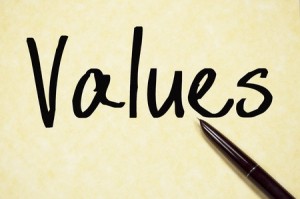Generating Business Growth on a Foundation of Values
The acquisition of LinkedIn by Microsoft for $26.2 billion is a big business story. While speculation varies about whether or not this is a good deal, no one is questioning that this is a major milestone of success for LinkedIn.
A Little Background
 LinkedIn started in December 2002, founded by Reid Hoffman and a team of members from PayPal and Socialnet.com. Over the next few years, with the injection of cash from various VCs, LinkedIn experienced steady growth. The founders did an outstanding job building the business, but wisely recognized the need for a new leader to take it to the next level.
LinkedIn started in December 2002, founded by Reid Hoffman and a team of members from PayPal and Socialnet.com. Over the next few years, with the injection of cash from various VCs, LinkedIn experienced steady growth. The founders did an outstanding job building the business, but wisely recognized the need for a new leader to take it to the next level.
When Jeff Weiner joined the company in late 2008, LinkedIn had 338 employees, 32 million members, and $78 million in revenue. This defines the kind of success many entrepreneurs only dream of and wonder how to achieve.
Under Wiener’s leadership, the growth trajectory kept moving higher.
The company’s IPO in 2011 provided the financial fuel to keep growing; and lots of people doing good work (plus some strategic acquisitions) propelled the company to new heights.
As of June 2016, seven and half years after Weiner started, LinkedIn surpassed 10,000 employees, 433 million members, and $3 billion in revenue. By all accounts, Weiner and his leadership team successfully led LinkedIn through some serious growth.
So what’s the foundation that permitted all this growth?
The Power of Values
According to the note that Weiner wrote to all employees about the acquisition, he credits the company’s success to two things:
- Staying focused on the mission and vision.
- Making the company culture and values come to life.
LinkedIn did not drift on its mission or vision. And its leaders leveraged their stated values to stay mission true.
 Consider the power and impact of the following statement by Weiner:
Consider the power and impact of the following statement by Weiner:
Ten years ago, had you asked me about culture and values I would have rolled my eyes and recited a line from Dilbert. But when I started as CEO I began to appreciate just how important they were. Culture and values provide the foundation upon which everything else is built. They are arguably our most important competitive advantage, and something that has grown to define us. It’s one thing to change the world. It’s another to do it in our own unique way: Members first. Relationships matter. Be open, honest and constructive. Demand excellence. Take intelligent risks. Act like an owner.
Weiner’s statement clearly outlines the company’s competitive advantage: culture and values.
Not just any values: values that define what makes the company unique.
Note the six values listed here:
- Members first.
- Relationships matter.
- Be open, honest and constructive.
- Demand excellence.
- Take intelligent risks.
- Act like an owner.
Interestingly, almost all of these map to the 17 Common Values I discovered across the Fortune 500 (including Microsoft). The one that stands out as a Differentiating Value is: Take intelligent risks. This support’s the company’s entrepreneurial mindset, hopefully something it can preserve moving forward.
The real power here is in how all six values work together.
Now, readers of my material will recognize that I strongly encourage business leaders to limit the number of values to three (maximum of four). But I can’t argue with LinkedIn’s incredible success with its six values.
I can only assume that Weiner and his leadership team did a superb job of consistently communicating and reinforcing these values, and providing clear rewards and recognition of decisions and behaviors that uphold them.
I applaud LinkedIn for how they have brought their values to life.
The Challenge Forward
Weiner openly states the reason for the Microsoft deal is to support LinkedIn’s continued growth. Even if LinkedIn can maintain its independence as promised, the leadership team will likely be challenged with values alignment.
Since I first started my research on values in 2009, it’s been interesting to watch how Microsoft’s values have evolved. They went from a simple listing of 7 values (in 2009); to a modified version of 6 values statements (in 2013); to a defined set of 6 values (in 2016) as outlined in their “Standards of Business Conduct.”
- Integrity & honesty
- Open & respectful
- Accountable
- Passion
- Big challenges
- Self-critical
Based on experience, I won’t be surprised if Microsoft evolves its values again in the future. While there is clearly some commonality to the values between these two companies, it’s in the execution where the rubber meets the road and values are put to the test.
Maybe Microsoft will simply adopt LinkedIn’s values…
Of course, time will tell if this LinkedIn-Microsoft deal is a good one. However, based on the history of LinkedIn, if the leadership team can preserve its foundation of values, its future does indeed look bright.









